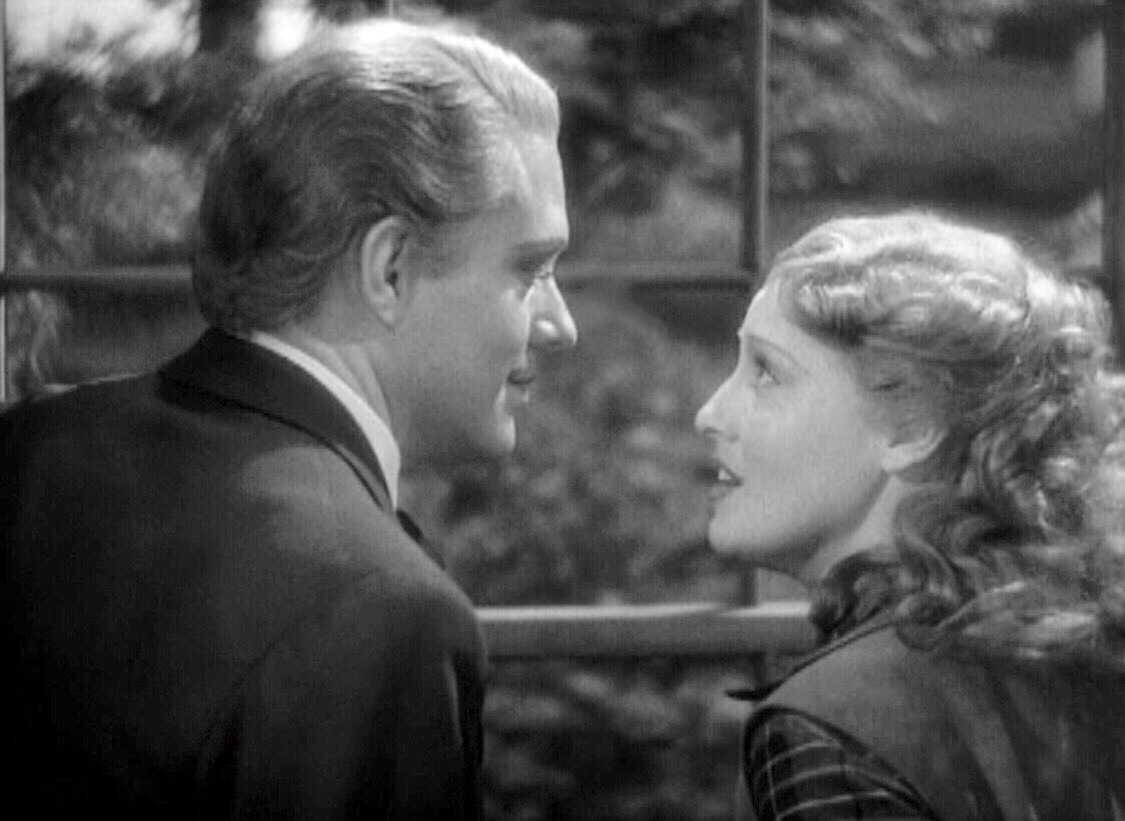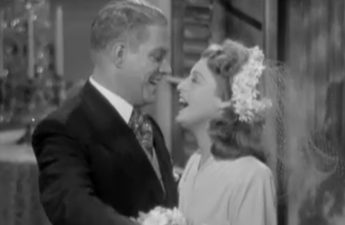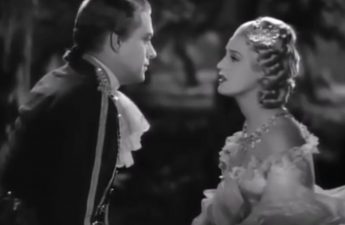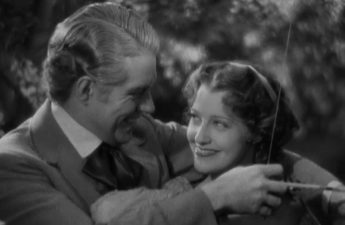This 2-hour film had to be very craftily edited. In the first hour, for example, Jeanette and Nelson are in the same shots together, actually interacting in the same frame, for a total of about 9 minutes. In the second hour, it’s a total of about 17 minutes. That’s only about 22 minutes total for the entire movie! And yet it works, for the most part, because when they are on-screen together, the emotions run high, especially in the “Obey Your Heart” number.
You can see for yourself that Nelson is suddenly sober and focused in their scenes together, and sexually suggestive in his songs to her, especially the jaw-dropping “Obey Your Heart.” Whereas Jeanette is instead busy “acting” her role of innocent Miss Cowgirl. She’s a wonderful actress and comedienne but the strain shows on her face in the serious scenes with Nelson. Remember we’ve seen photographic evidence that she wept too while filming “Will You Remember” in Maytime but during that scene it was Nelson who lost it, unable to sing that song without focusing on the tree behind her. In Girl, Jeanette’s professionalism finally fails her during “Obey Your Heart.” Once again, the blur of real life ironically mingled into what was happening on-screen. This is why, I was told, the crew finally knew for certain that Jeanette’s pretense of an idyllic marriage to Gene Raymond was a sham. And from the unpublished memoirs of Nelson’s mother, we learn that Nelson came to realize this as well and began working to win her back. But about the only place where he could get her “alone”, where she couldn’t avoid him and his insistent, erotically caressing and making love to her fingers, was while being filmed. So all this went down with the director and cameramen just a few feet away, watching her inner struggle and Nelson’s frustrated passion.
Girl was directed by Robert Z. Leonard and at least began in color, which was also scrapped because of the issues noted above. This was going to be an expensive shoot and a troubled shoot; why “waste” the color when their devoted fans would show up anyway at the box office.
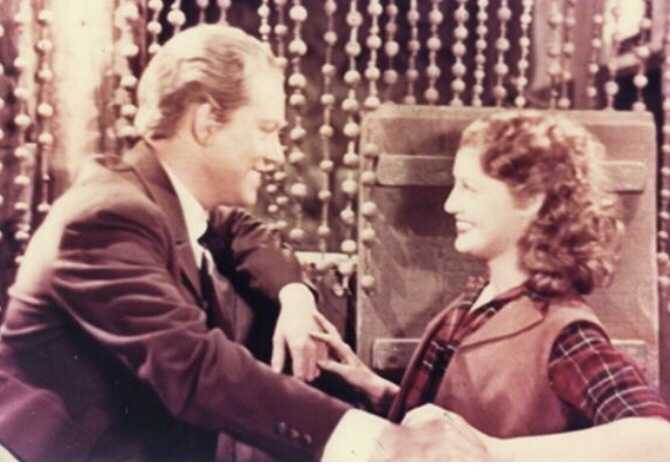
In the early 1970s I met an elderly man who had worked at Technicolor in the 1930s. Long retired, he had an amazing collection of color clips, films, scrapbooks and written records from Technicolor. He pulled out a somewhat faded 35mm film strip of several frames from the scene pictured above. He kindly cut off one frame and gave it to me along with another frame from Jeanette singing “Ave Maria” in the church choir scene as well as color portraits (now also faded) and glass slides of Jeanette and Nelson together from Girl plus a candid shot of her on the set with her makeup kit, also in color. In other words, this was once again intended to be the first MacDonald/Eddy (and MGM) film in three-strip Technicolor. But no, they had to wait until their next film, Sweethearts.
As with Rose-Marie, once the footage was processed in black-and-white, suddenly Nelson’s makeup looked ludicrous in some scenes, even to having two sets of eyebrows, like in this closeup below. Between the (unnecessary) wig they slapped on him, the painted-on eyebrows and lipstick, one can only deduce that Mayer still considered Nelson a troublemaker and was once again making an effort to subtly bring him down in popularity.
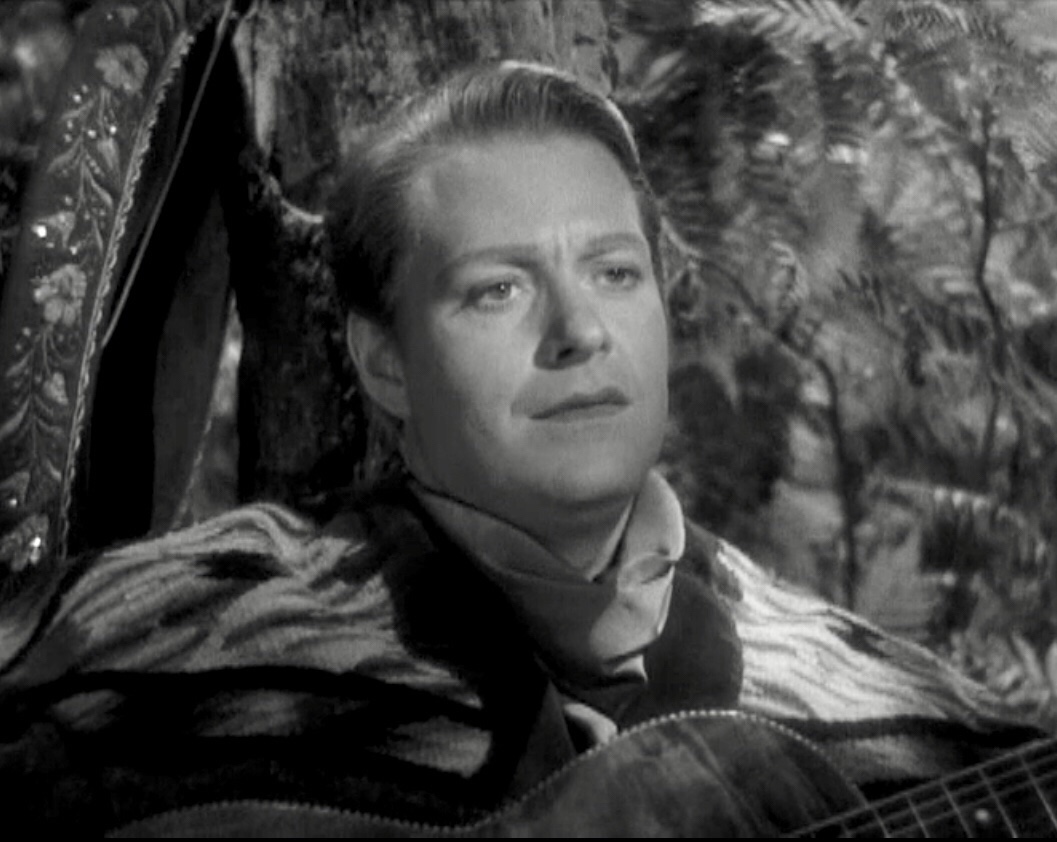
This was further substantiated by a new demeaning nickname for Nelson, “the singing capon,” a rumor that was spread by, of all people, Ray Bolger. Why Bolger would be prompted to promote that falsehood is unknown; I was told by 3 people that this was on Mayer’s orders. It’s puzzling because Nelson and Ray Bolger had just filmed Rosalie together and gotten along fine. Bolger would also be featured in Nelson’s next film, Sweethearts. Perhaps there was some hostility at this point in time because Ray Bolger originally had a major role in The Girl of the Golden West, as seen here with Jeanette.
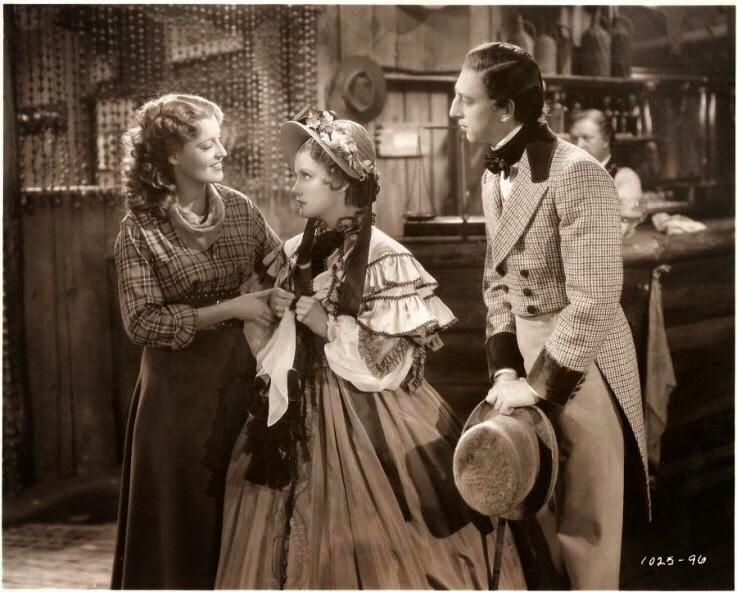
Note that the photo above is in a sepia tone rather than regular black-and-white. When the color was scrapped, the 35mm studio prints of Girl were released instead in this sepia tint. I saw a 35mm print of it in a theater in sepia in the 1970s.
Ray Bolger was completely cut out of the final movie and I was told years ago that he somehow blamed Nelson in some manner. Another photo shows Bolger in a dance number:
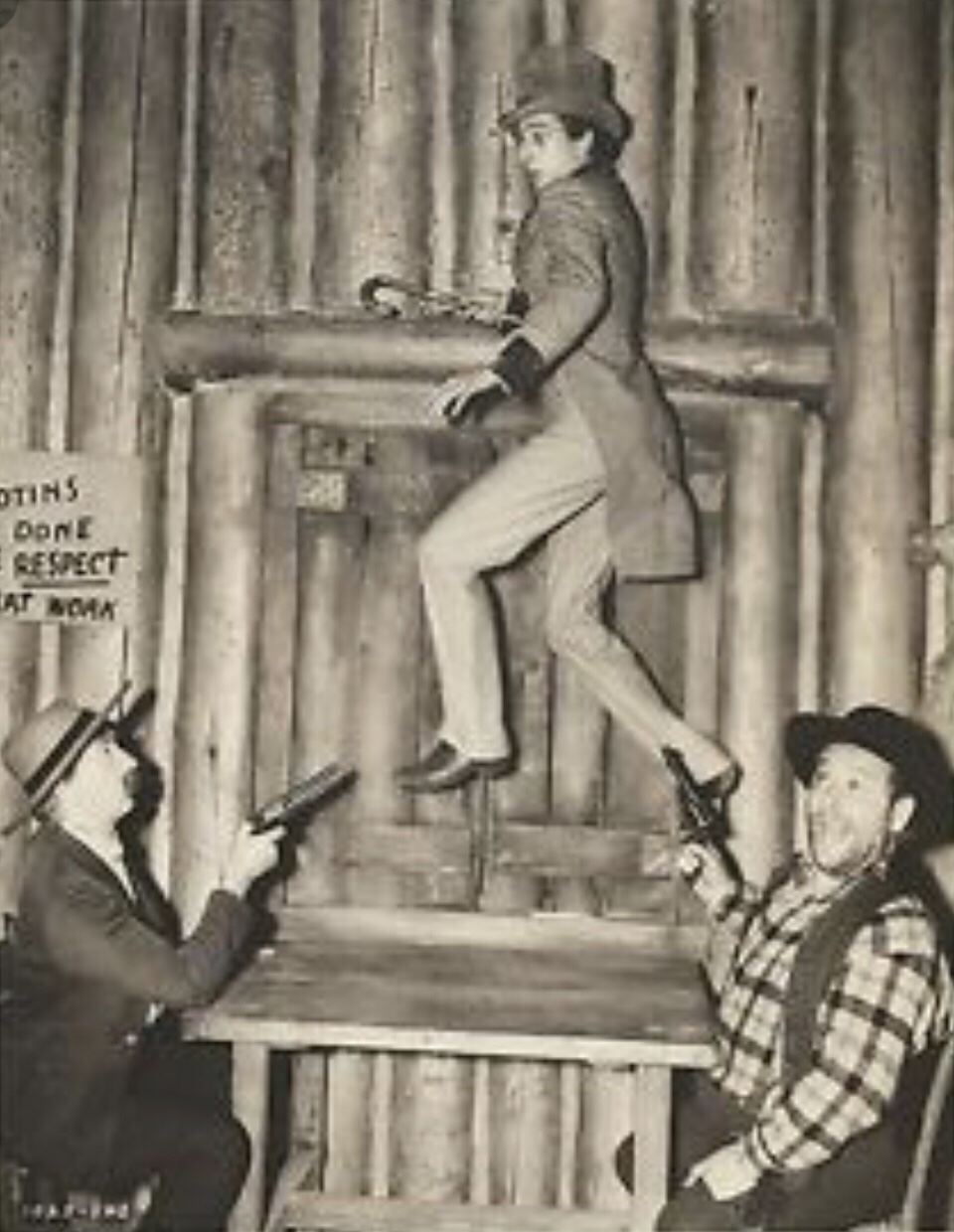
At any rate, it was Buddy Ebsen who now received fifth billing and was the featured comedian:
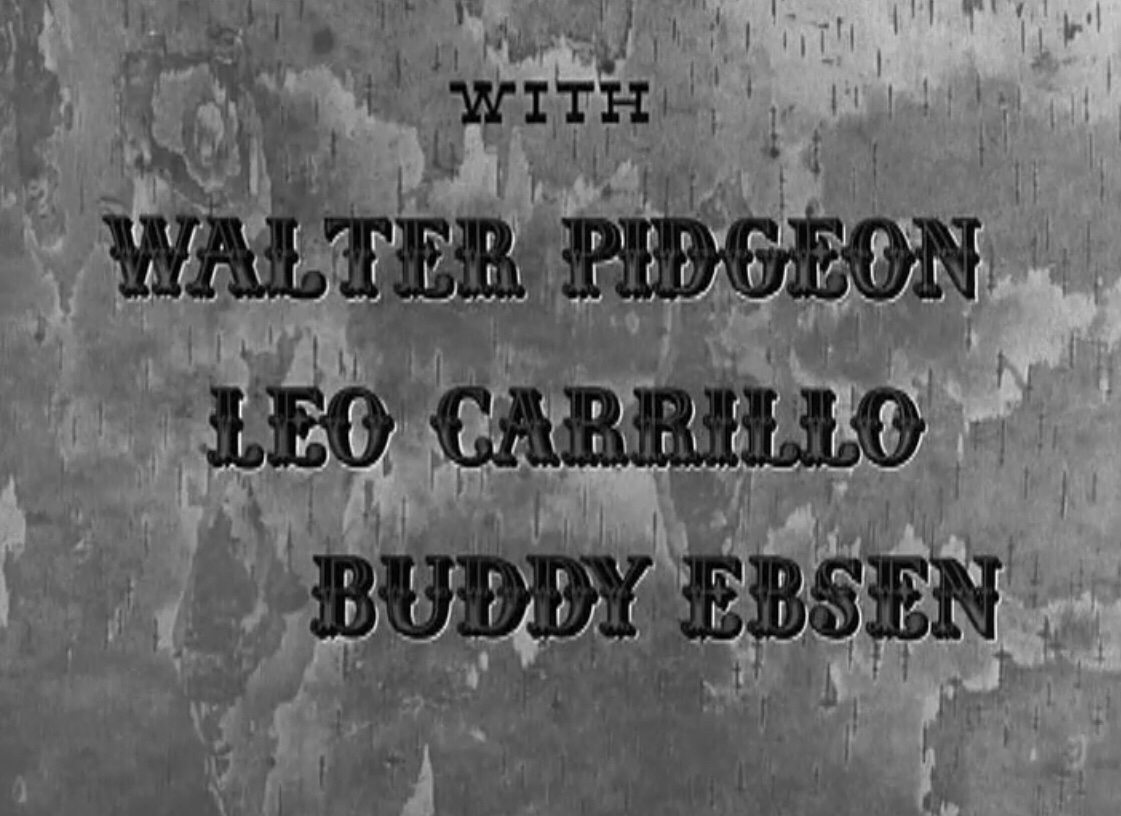
And now to the film itself. It opens with a 14 minute prologue showing Jeanette and Nelson’s characters as children. This was actually filmed at the tail end of production, when Nelson was headed off on another smash hit concert tour. Bill Cody Jr. played the young Nelson, whose character is mentored by Noah Berry Sr, the older brother of movie star Wallace Beery.
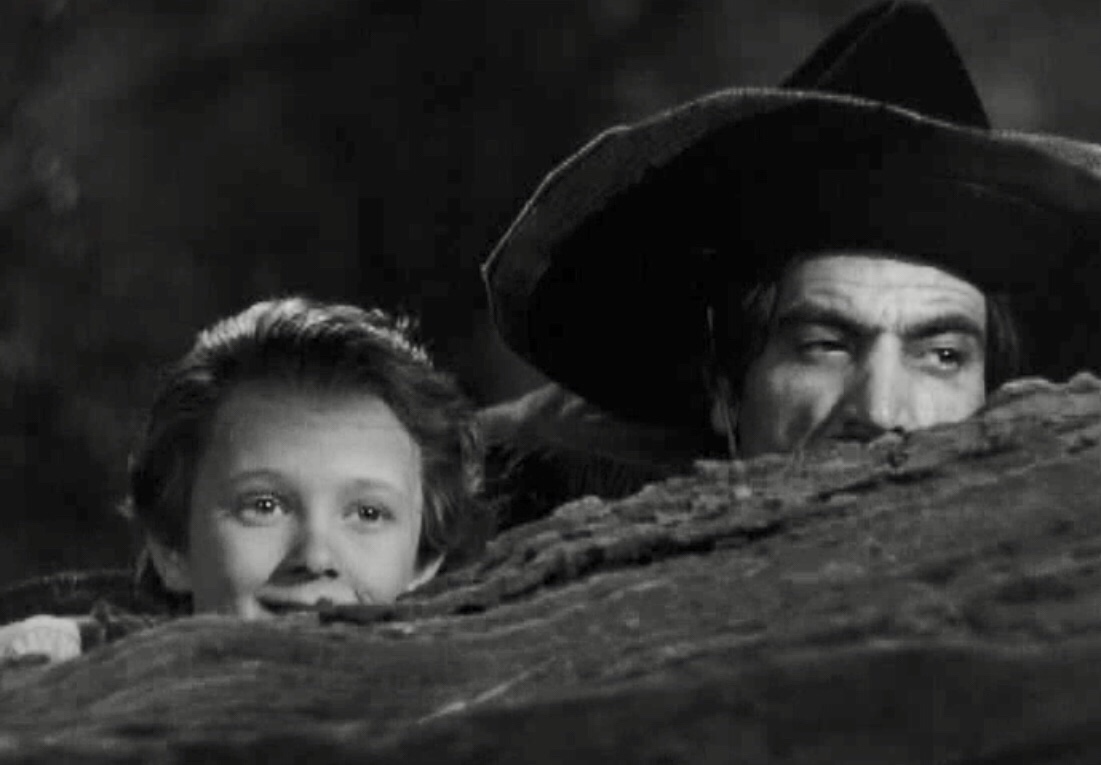
Young Jeanette is played by Jeanne Ellis, shown here with H.B. Warner, portraying Father Sienna.
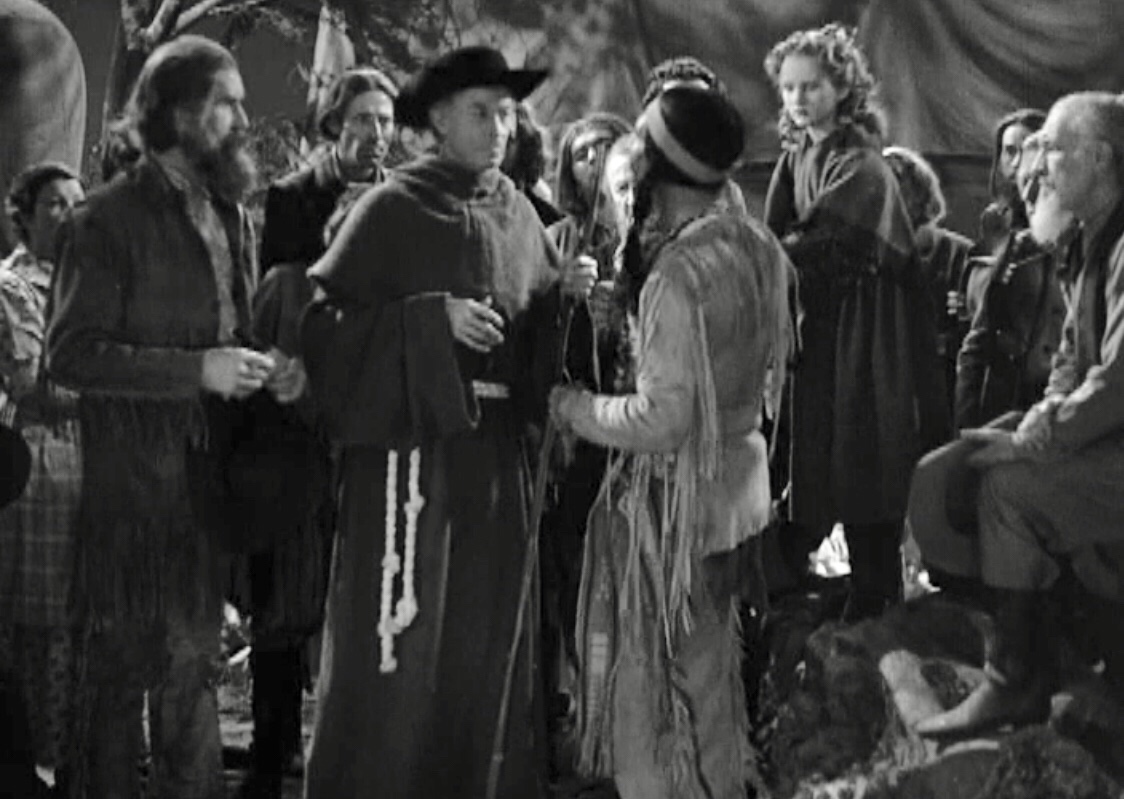
Warner was a fine English actor who starred in many silent films such as portraying Jesus in The King of Kings (1927) and was nominated for Best Supporting Actor in Lost Horizon (1937). In both Girl and New Moon (1940) he played a priest and also was memorable in Nelson’s Let Freedom Ring (1939). Sadly, in real life he was an alcoholic; whether because of ill health or personal demons, the MGM folks I interviewed didn’t seem to know why. But all spoke with great respect of his power to steal scenes with his mere presence.
14:30. For the first time, Nelson is the first one to appear on-screen! (Thus shutting down the then-haters who had long blamed Jeanette for “hogging” their films, as if it was her fault.) Nelson and his sidekick Leo Carillo burst in the scene with the necessary marching song, here being “Soldiers or Fortune”.
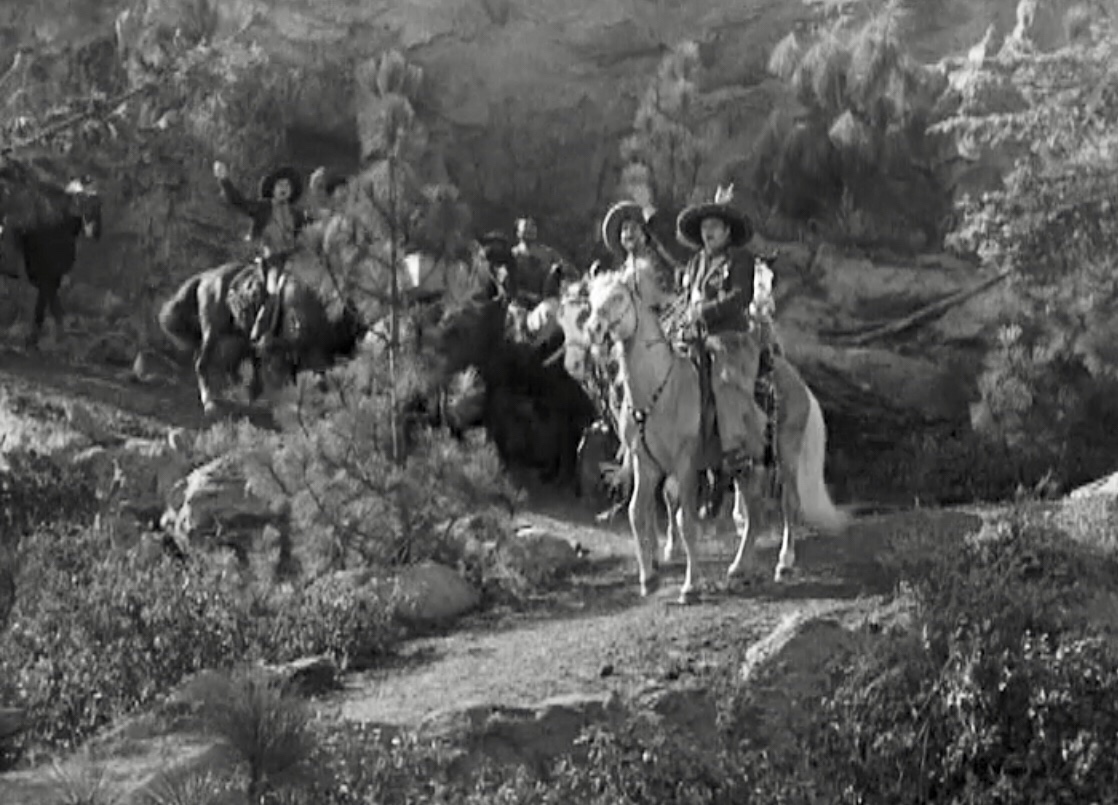
The problem was, with all of them waving one arm in the air as they sang, Nelson who was a bit “under the weather”, lost his balance and fell off his horse. He was pulled to safety by Leo Carrillo, seen here on Nelson’s right.
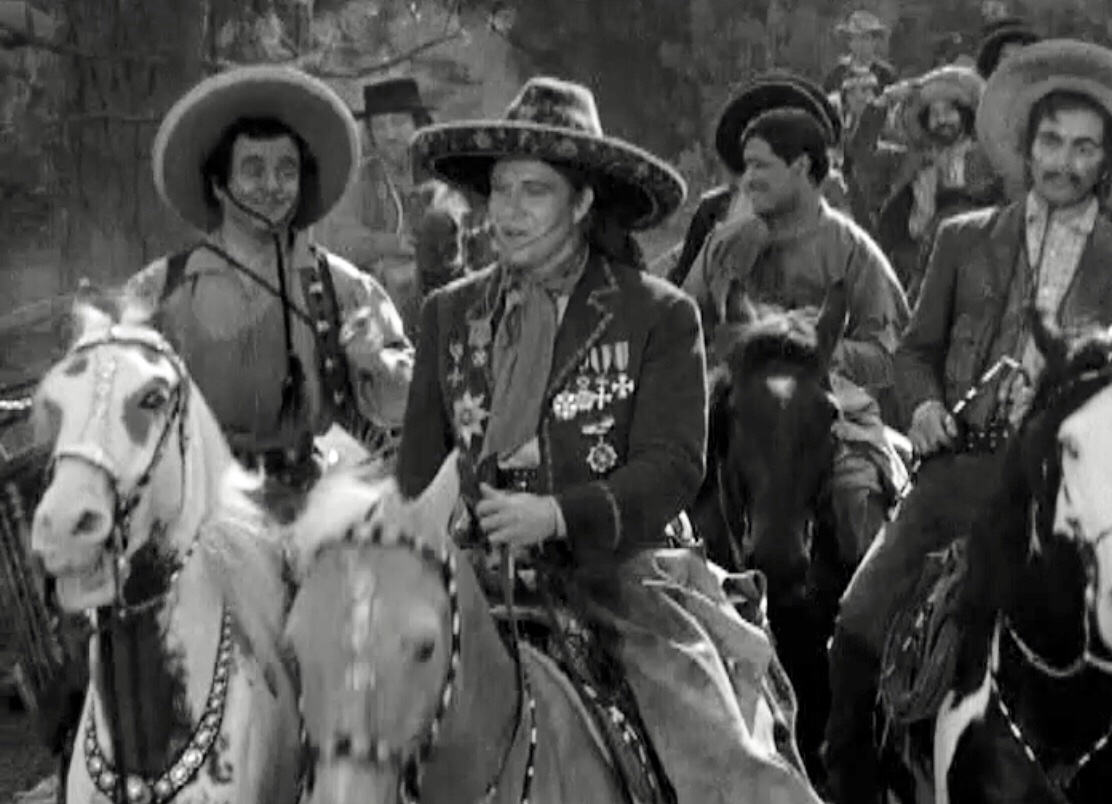
18:00. Nelson with Priscilla Lawson, his love interest in the film before his character meets Jeanette. Off-screen Nelson flaunted his brief affair with Lawson on the set and particularly in front of Jeanette. L.B. Mayer certainly knew what he was talking about when he said, “All actors are children.”
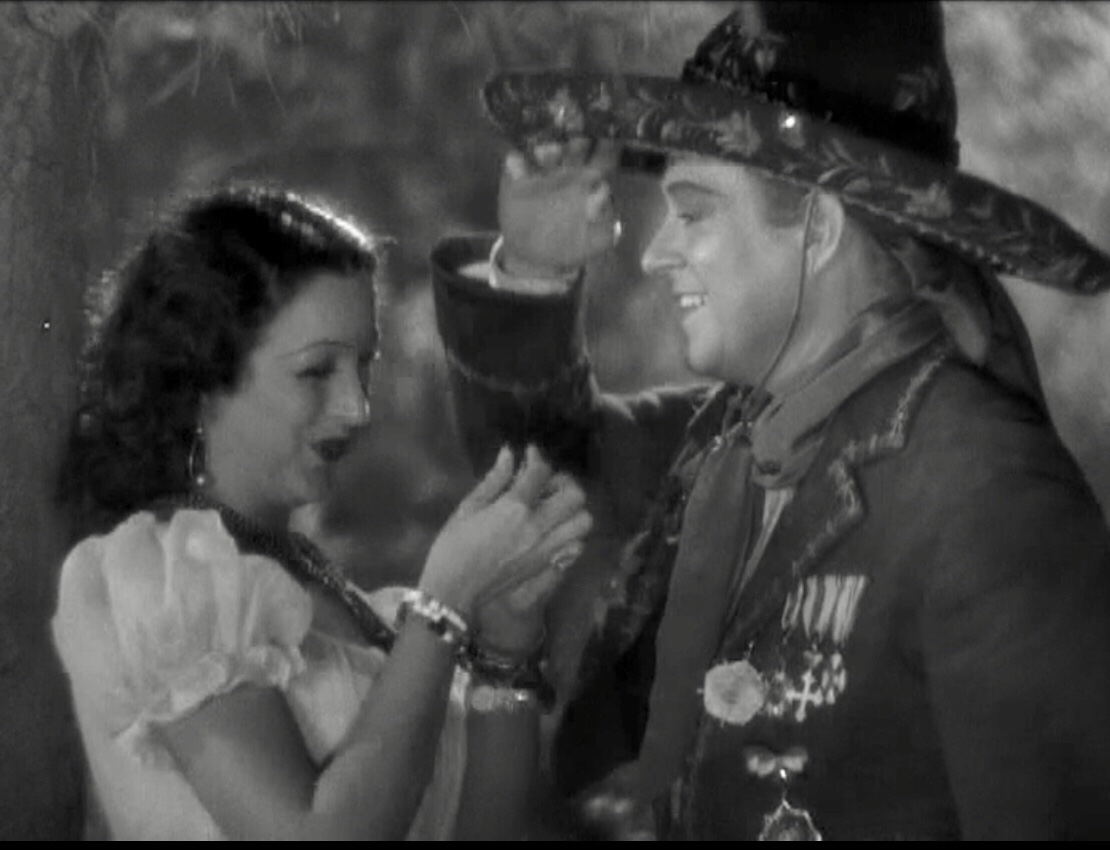
Lawson had a short-lived film career and was most famous for playing Princes Aura in the original Flash Gordon series. She died an early death at age 44, also an alcoholic.
19:00. Jeanette finally shows up.
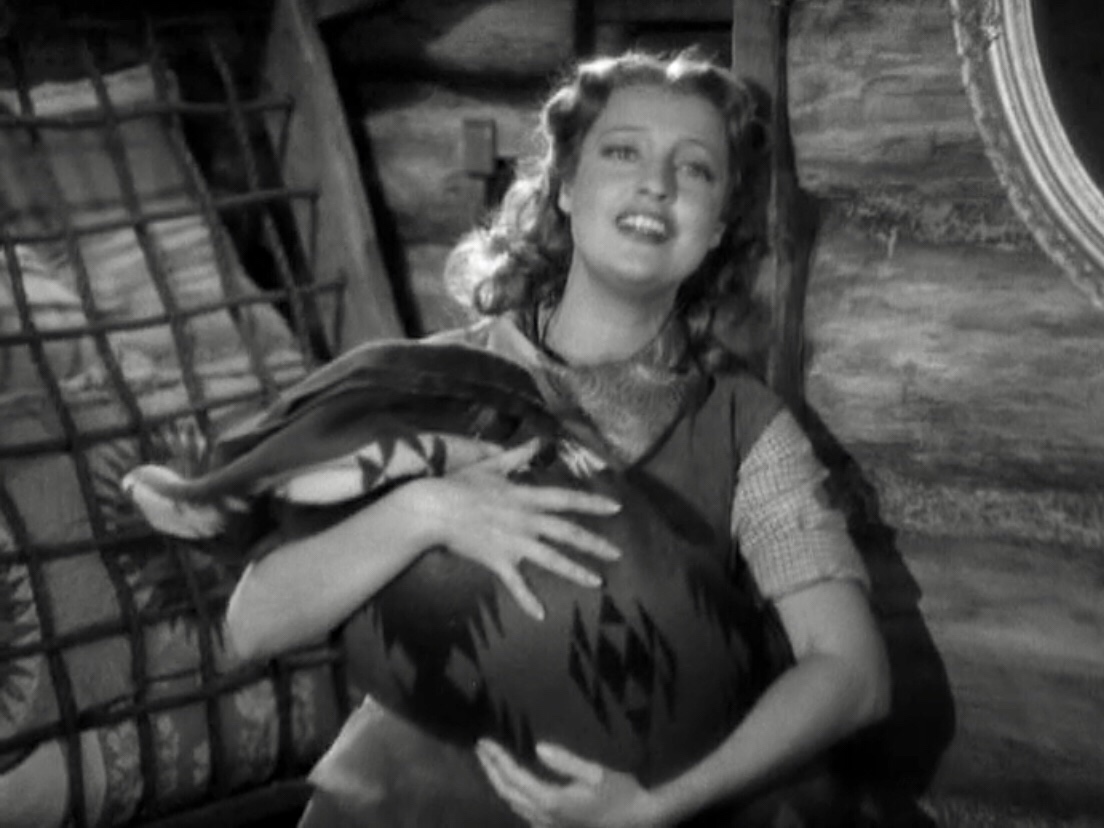
And in closeups we see the strain on her face. Some folks feel she over-acted in this role; if so perhaps it was an effort to channel her energies away from her personal feelings.
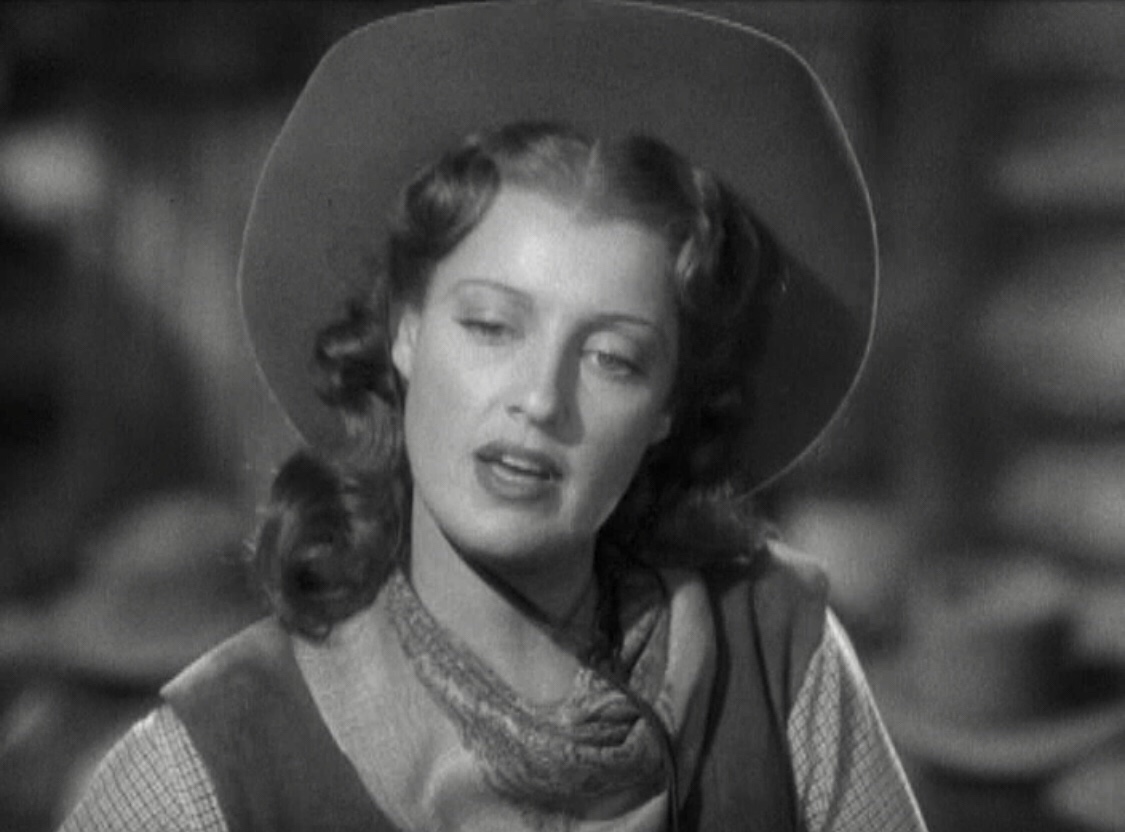
22:00. Buddy Ebsen proves to be a wonderful choice for Jeanette’s character to bounce off of; most of the winsome charm of this movie is in their scenes together.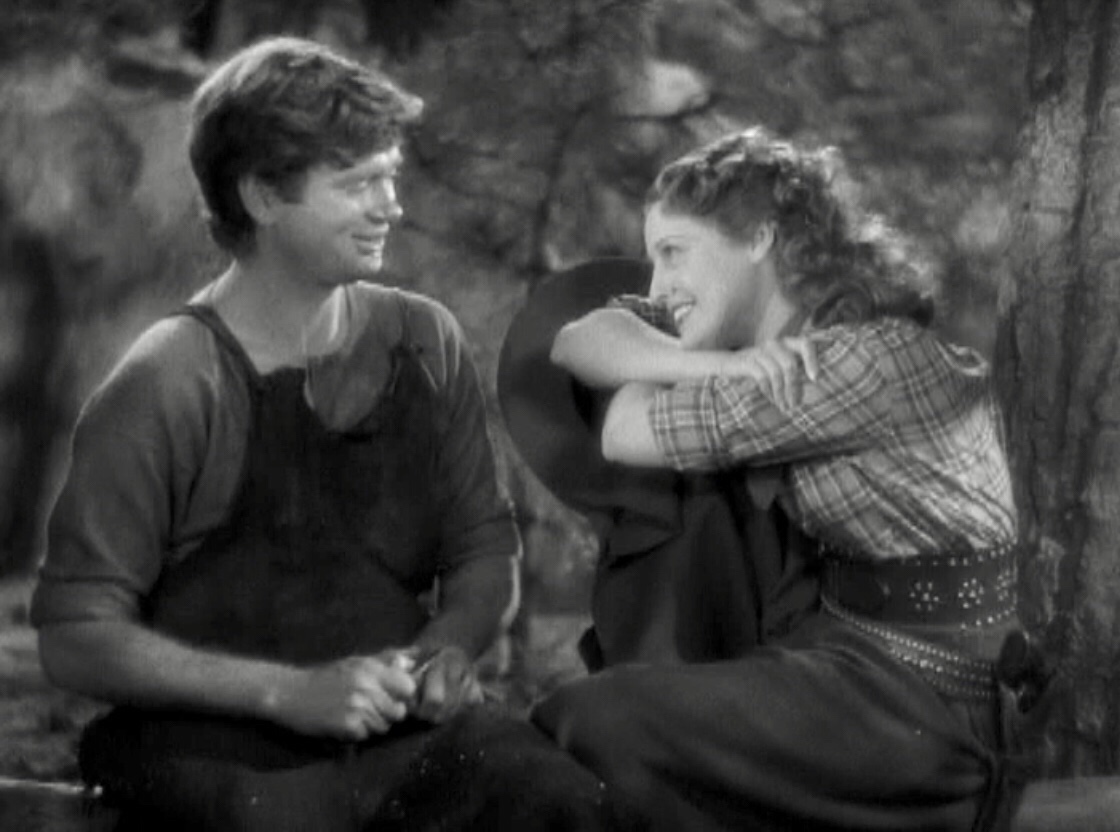
26:00. Walter Pidgeon shows up as the sheriff rather unconvincingly wooing Jeanette’s character. Pidgeon seems professional but a bit bland in his role; when I went to his house to interview him in his last years, he didn’t even remember making a film with Jeanette and Nelson.
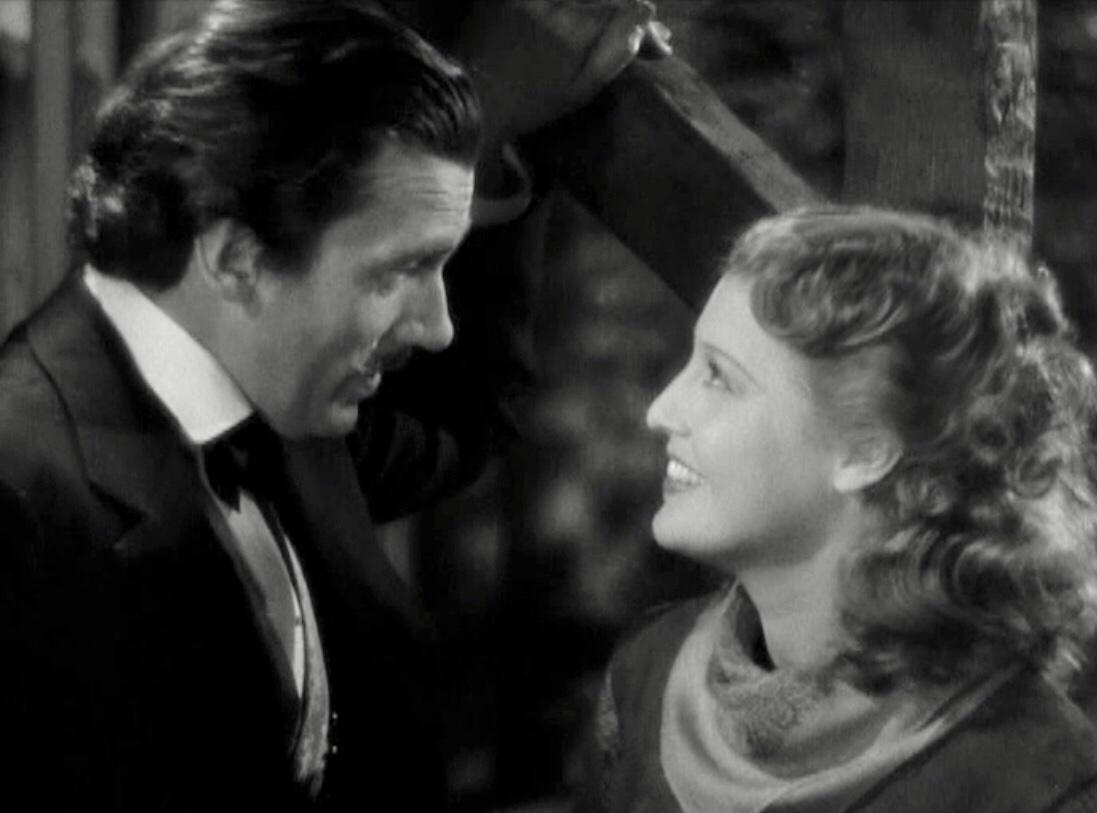
34:00. A piano is delivered to the Polka saloon so the action can stop and Jeanette can sing Franz Liszt’s “Liebestraum” (Dream of Love). Obviously, Jeanette is exquisite and so expressive in her acting while singing that fans sometimes wait for the plot to move along just to get to the songs. Still, if one looks closely, one can see a stray tear on her face while her virginal and nearly illiterate character is wistfully singing about love.
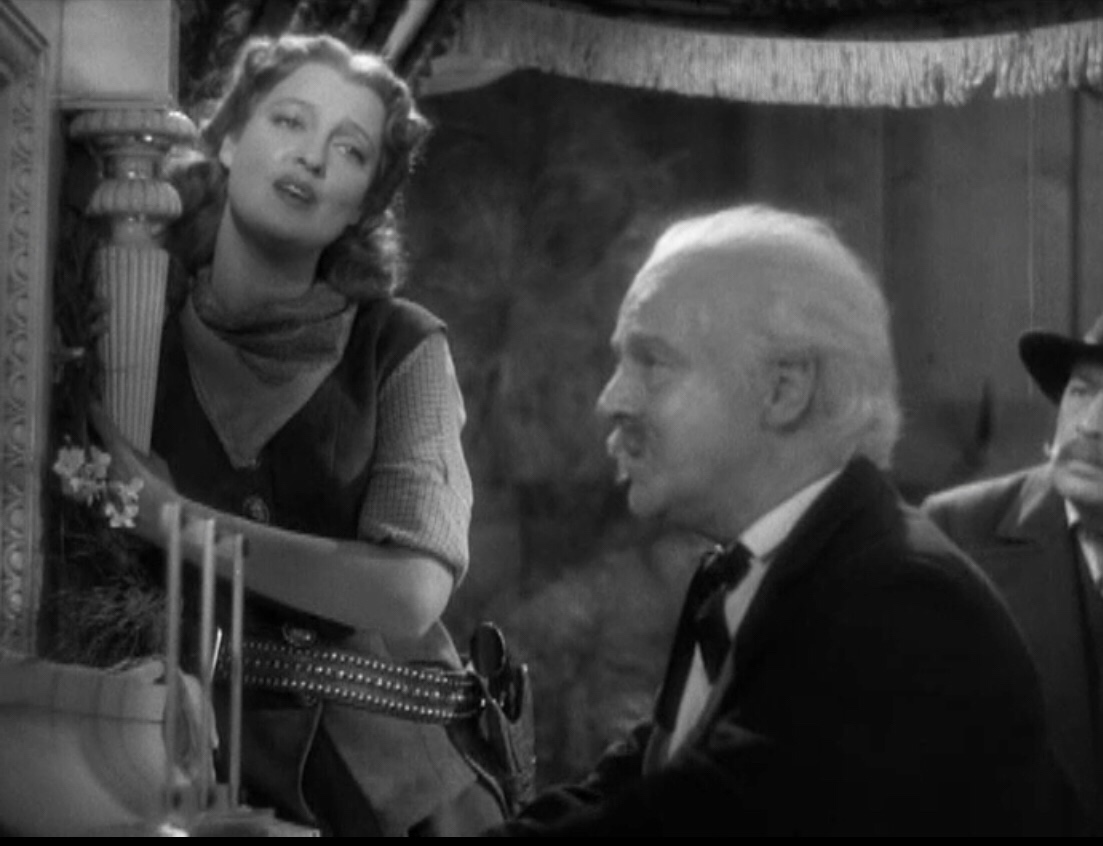
40:00. At last! The scene begins in which the two stars will actually be in a shot together and one minute later, 41 minutes into this movie, Nelson confronts Jeanette as a bandit and she smacks him across the face. This scene goes on for 3 minutes.
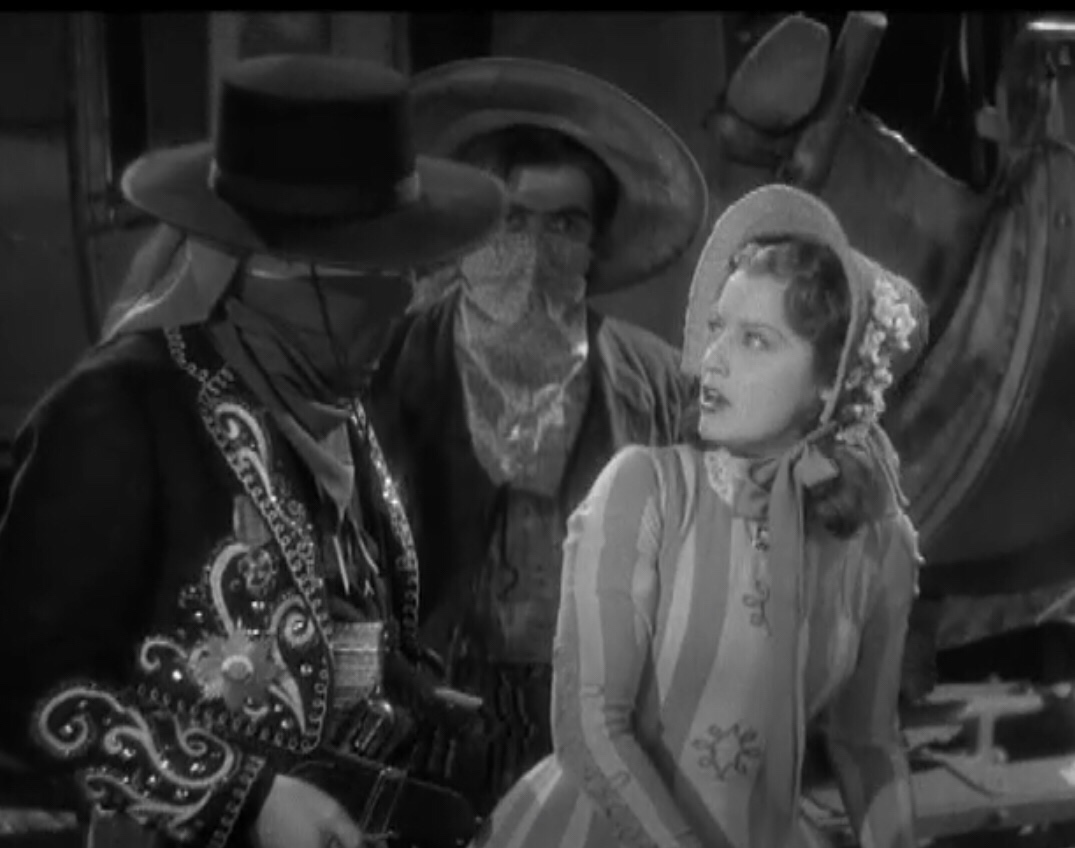
45:00. Jeanette goes to Father Sienna’s church in Monterrey where she can next sing “Ave Maria.”
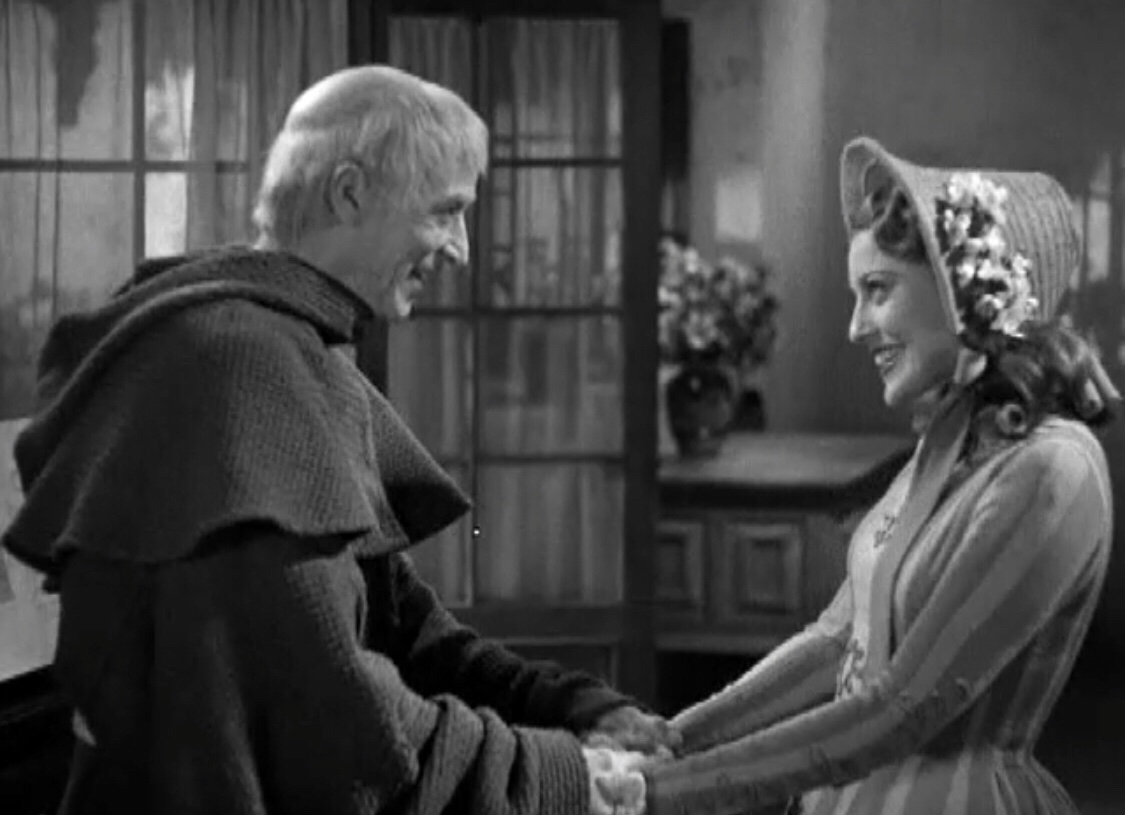
49:00. During Jeanette’s song, Nelson sneaks in to listen to her and drop some money anonymously in a box for Father Sienna’s church (he’s a kind of Robin Hood). But make no mistake about it, the two actors are not in the same shot, maybe not even forced to be on the set at the same time. The editing tricks the viewer into make it seem so, thus giving the story continuity.
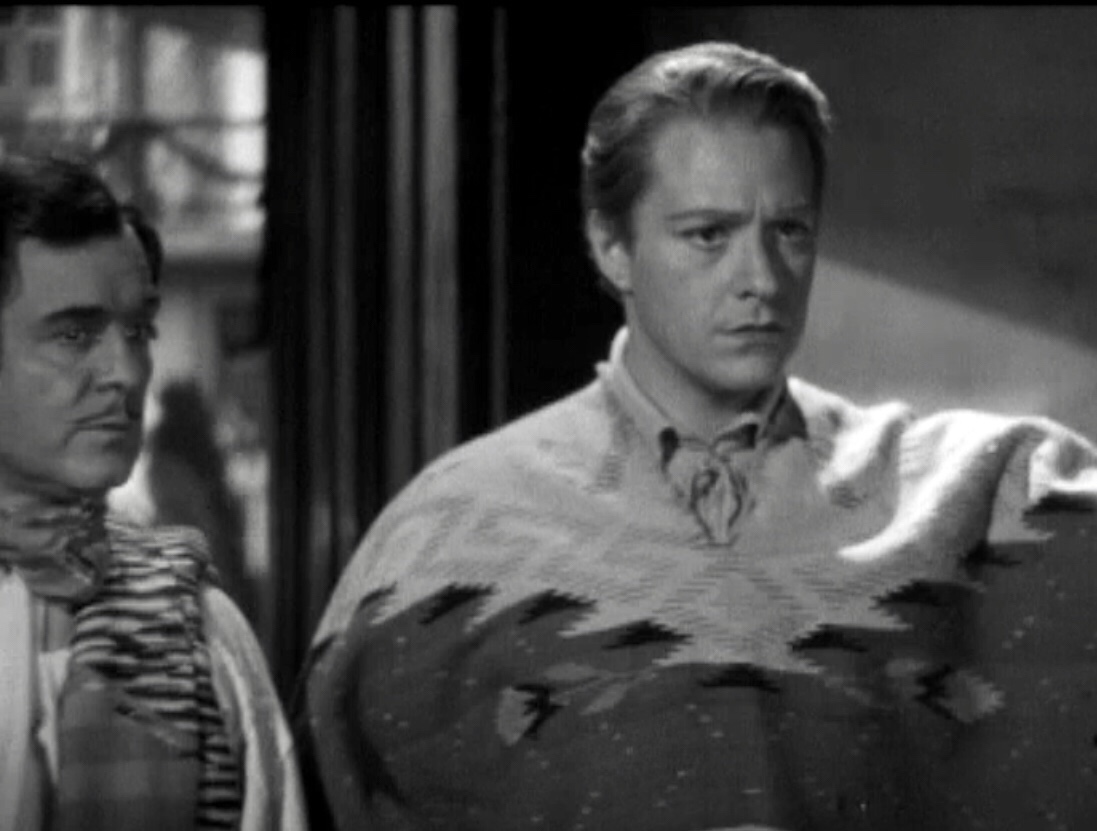
50:00. The huge Mariachi number at the governor’s “rancho” is set up and in preparation this is where Jeanette and Nelson have a major scene together. But first Jeanette has an adorable scene with Father Sienna in which she tries to learn manners and admits “I only had about $32 of education.”
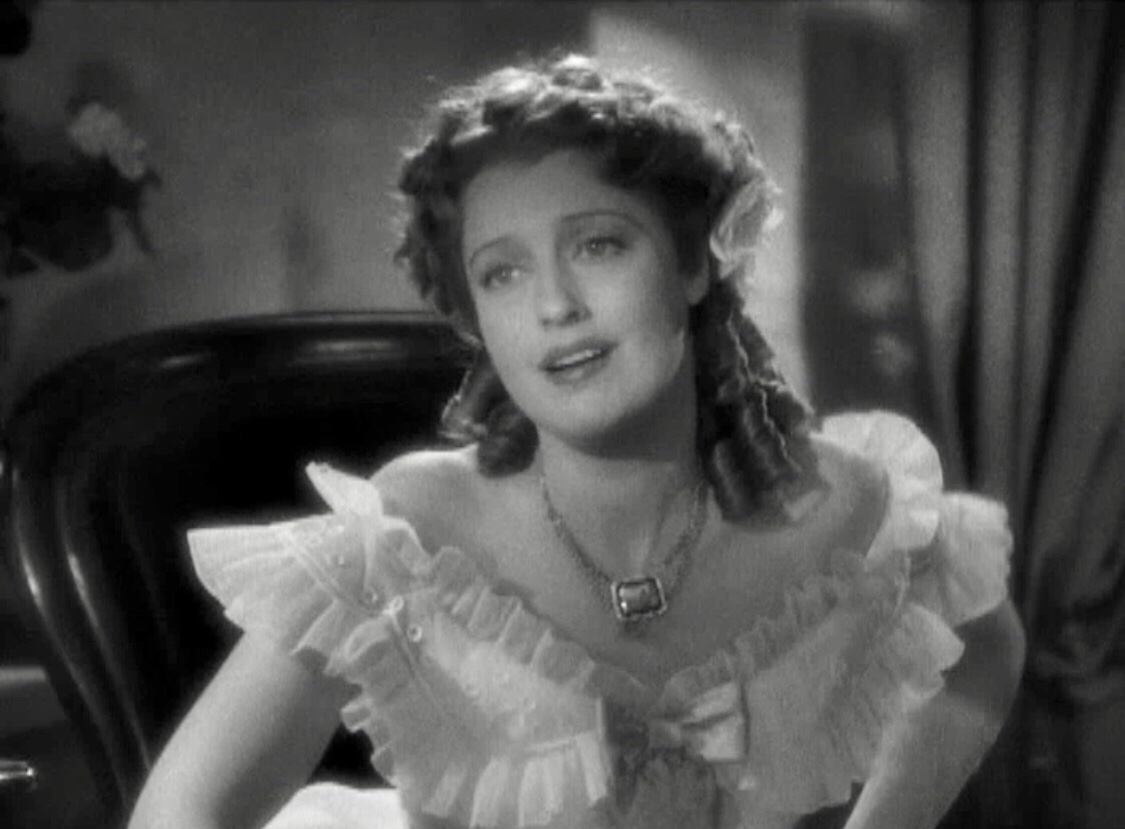
52:00. Nelson shows up at the celebration in disguise as Lieutenant Johnson and for the first time, his focus as an actor seems razor sharp.
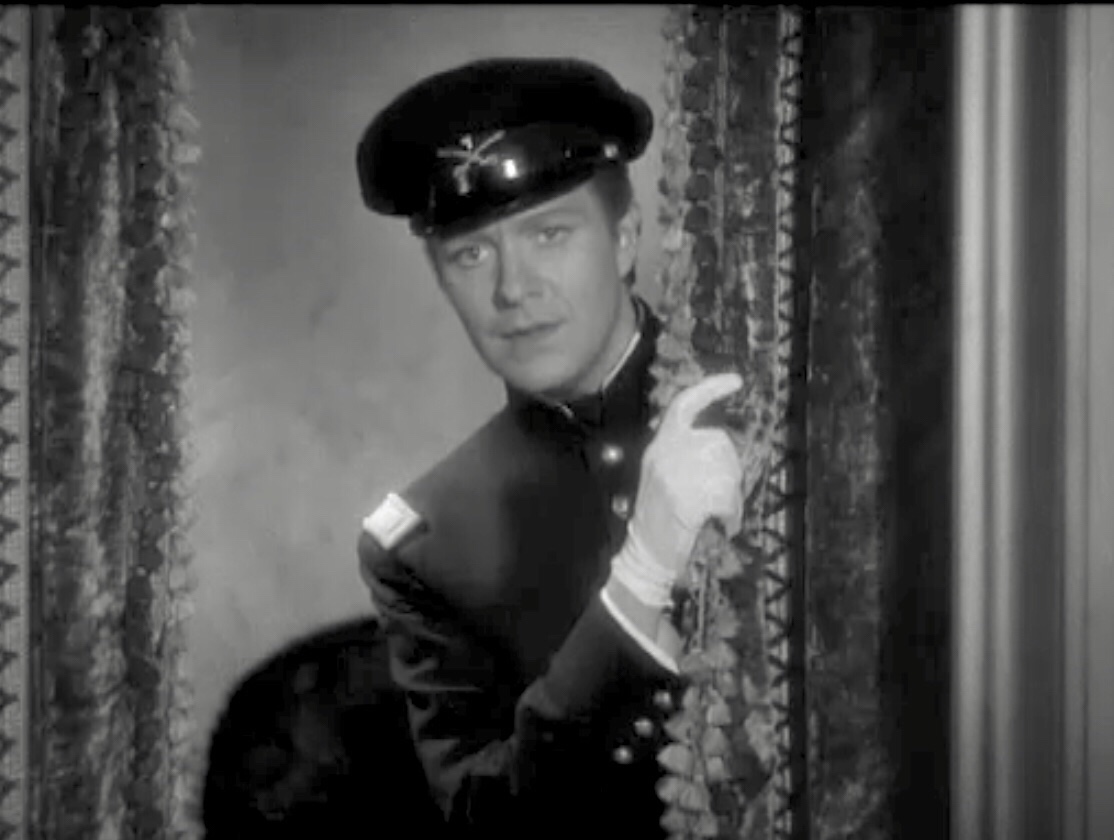
53:00. They have a scene together! Nelson describes a choice of 3 carriages they can take. But once in the carriage while MGM dancers/singers are performing, Nelson stands up waving his arms and bouncing along with them, his gait so loose-limbed that it’s obvious he’s had a few drinks is to get through the scene, which took all of 3 minutes.
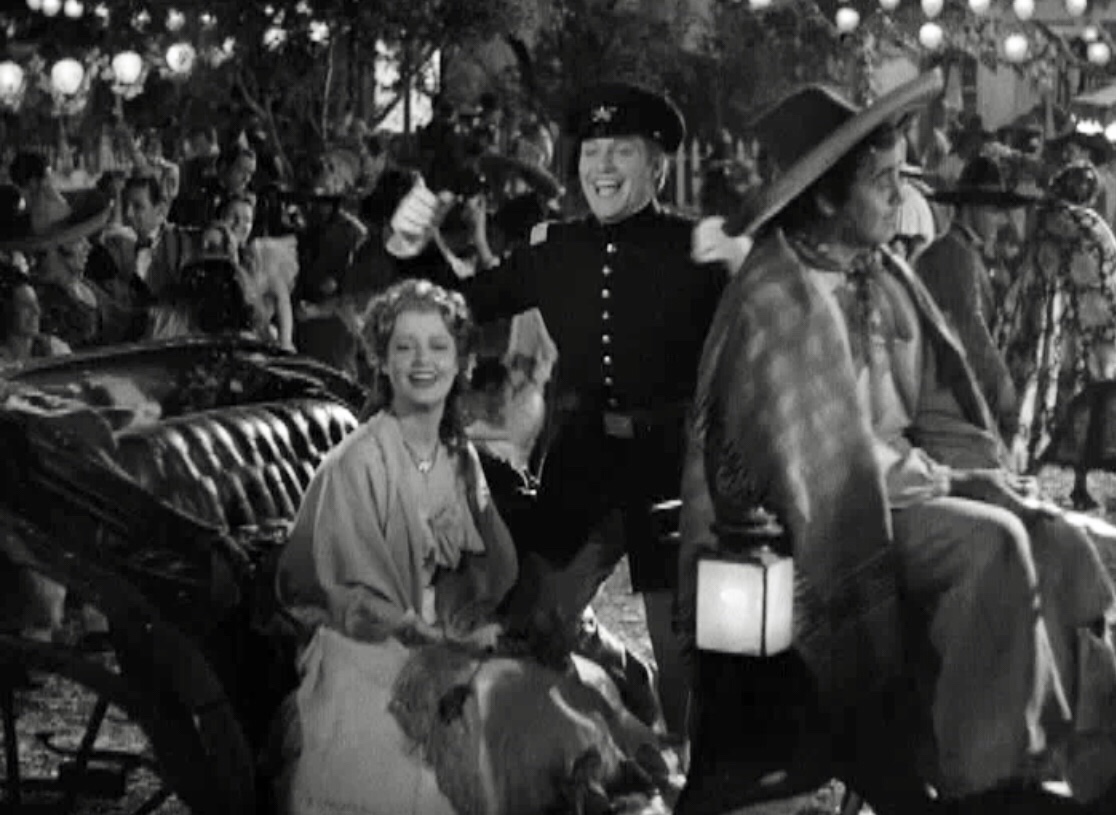
Mayer was so fed up with Nelson’s behavior that he flew Nelson’s estranged father out from the east coast to try and talk some sense into him. As explained in my book Sweethearts, this “family reunion” failed miserably. Nelson’s father had been a drunk and deadbeat father, was physically abusive to young Nelson and his mother both before dumping them and walking out of their lives when Nelson was 14. Nelson had to drop out of school and go to work to help support his mother, who basically home-schooled the rest of his education. Now Nelson was forced to look civil and pose for photos with his dad on the set but privately fumed about Mayer: “He’s lucky I’m here at all,” and “What are you going to do next, spank me?”
57:00. Nelson and Jeanette arrive at Cypress Point in Monterey where it’s time for him to sing “Señorita” under the tree. This one is pretty G-rated; Jeanette stays in character for the song, playing coy. Nelson does start up with the finger caressing, however.
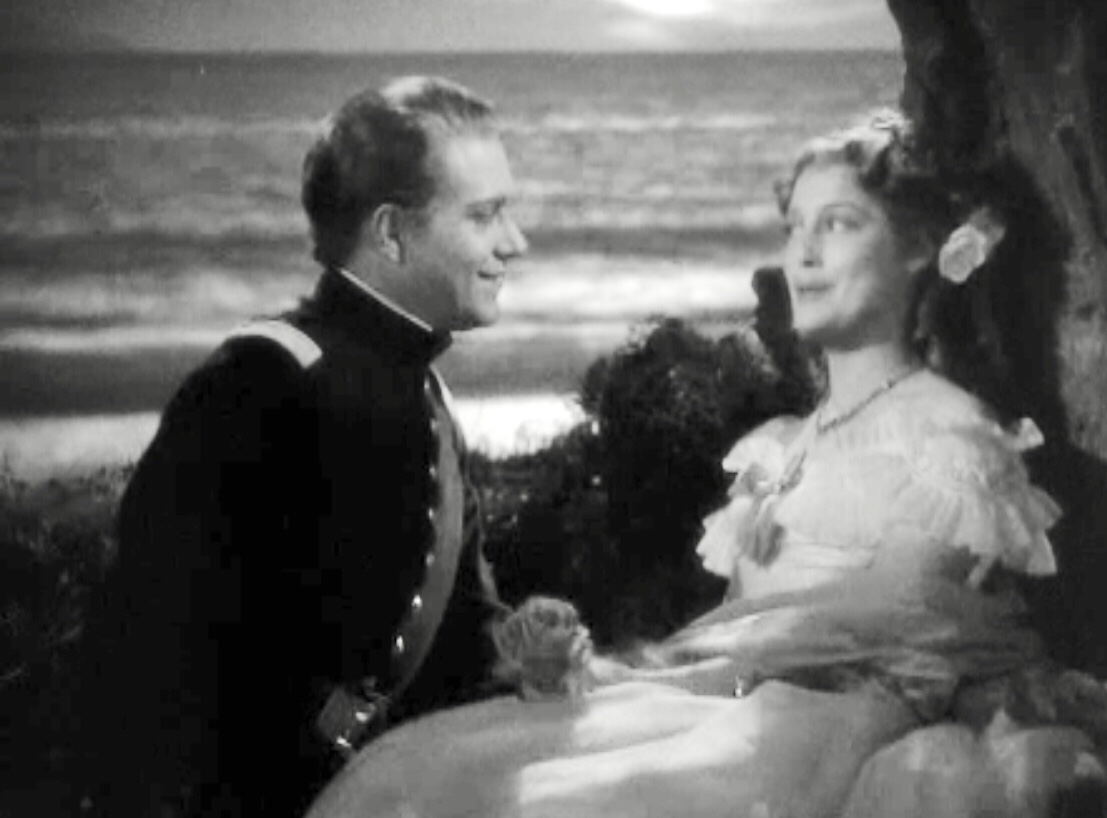
59:00. Nelson sings “you won’t love me a little so why should I love only you…” and now snakes his arm up along hers. She looks quickly at him and then down.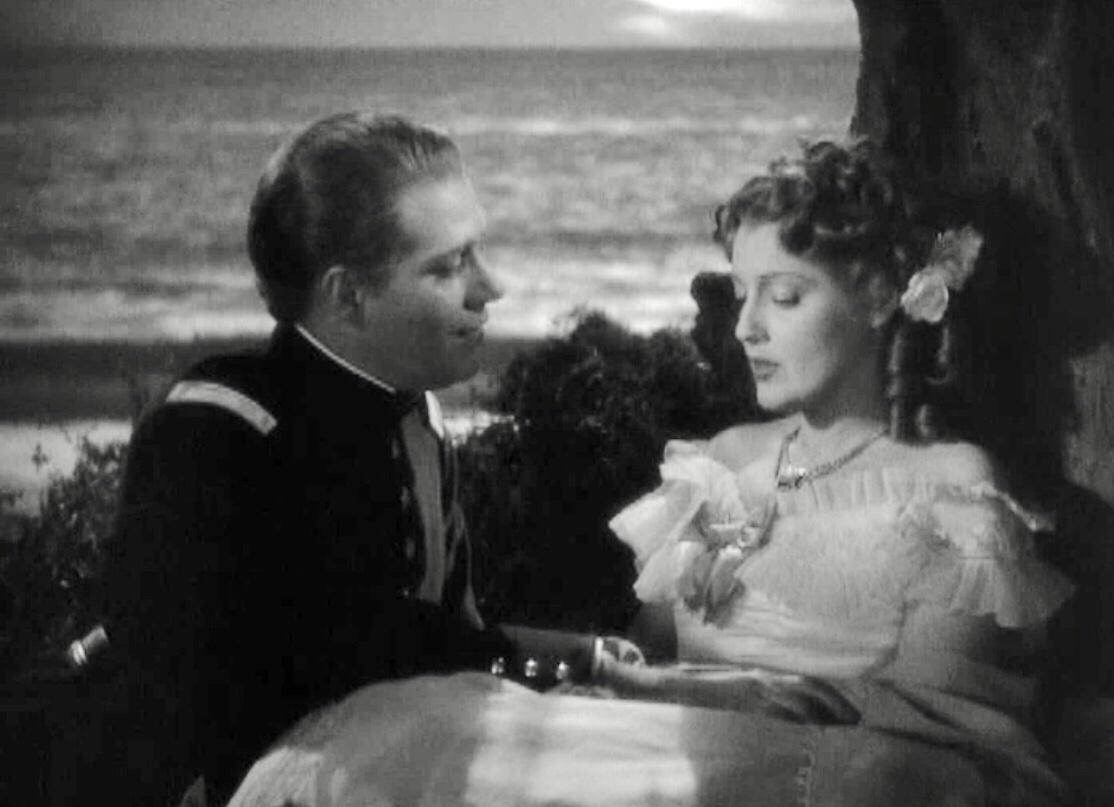
He quickly kisses her but she smacks him in the face and that ends that. We’re now up to one hour and they’ve had, as stated previously, about 9 minutes of actual togetherness on-screen.
1:00. The big Mariachi number starts, over 3 minutes of expertly choreographed MGM singing and dancing from everyone but the stars.
1:04. Nelson lassos Jeanette around the waist; they dance and in this scene they are themselves. Adoring Nelson is eating her up with his eyes and she responds in kind. Candid photos from this scene show them laughing and relaxed, with eyes only for each other, probably the only scene like this except for the last shot of the film.
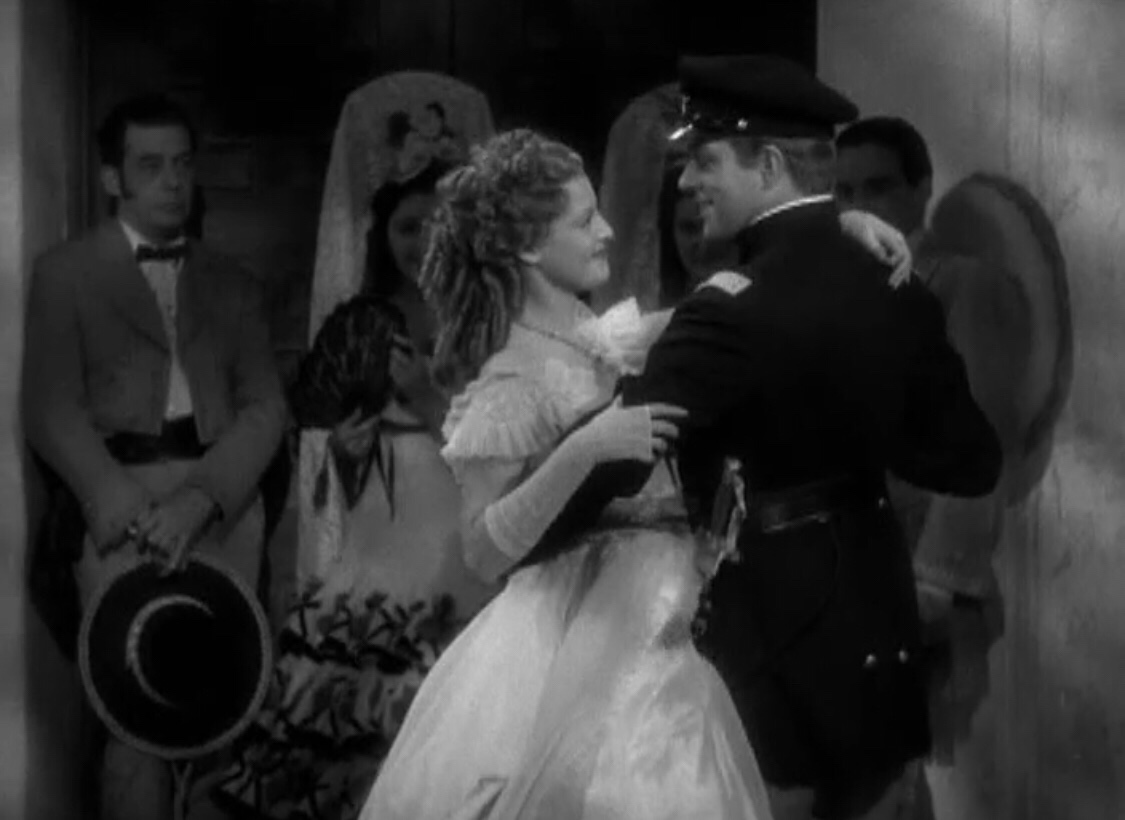
1:04: They sing a few measures of a duet before Nelson runs off.
1:05. Now we go off to another long stretch without the two of them together. Actually a full 10 minutes as the sheriff plots to nab the bandit Ramirez, Nelson and Jeanette separately talk about their falling in love with Leo Carrillo and Buddy Ebsen. Buddy sings “The West Ain’t Wild Anymore.” Nelson wanders into the Polka, scoping it out to rob it before realizing Jeanette owns it.
1:16. Nelson and Jeanette speak to each other.
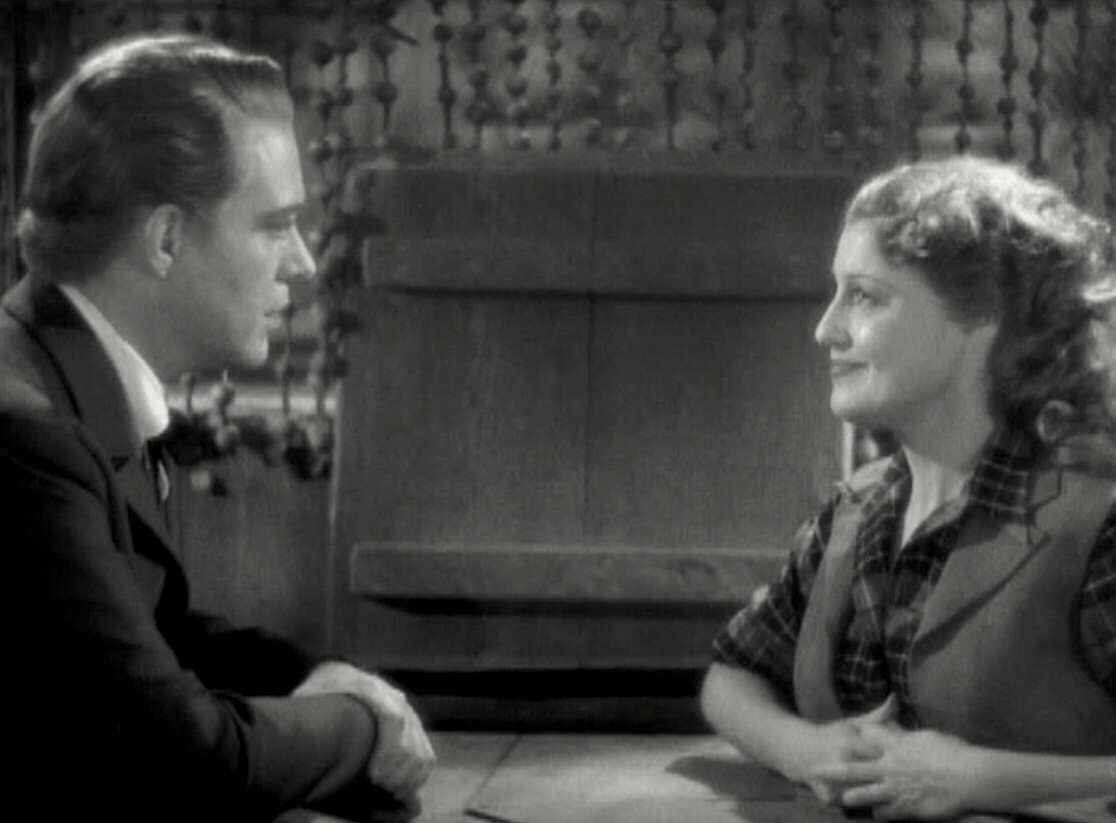
And when they walk out of the saloon, Nelson’s back to “beaming like a headlight.”

1:22. They sit under the tree where Nelson sings “Obey Your Heart” and Jeanette’s “acting” crumbles. Nelson is busy stroking between her fingers and up and down her thumb. Before they can kiss and reprise the duet (that couldn’t be filmed), Buddy Ebsen conveniently shows up and the scene ends. At the end of this article is a link to get a more detailed analysis of what to watch for in this scene as well as closeup footage of this and the actual pre-recorded duet as it was meant to be sung.
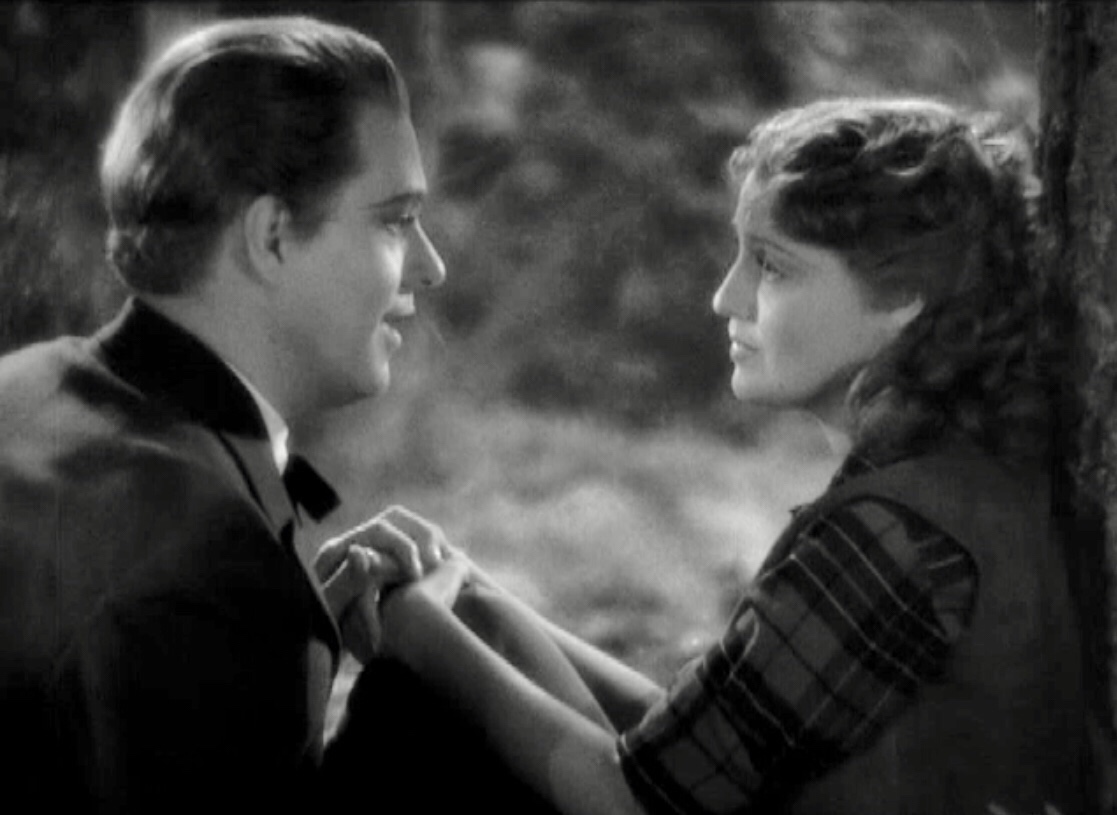
1:31. Nelson comes to her cabin for supper; they realize they have known each other since the childhood early sequence; Nelson caresses her fingers again…
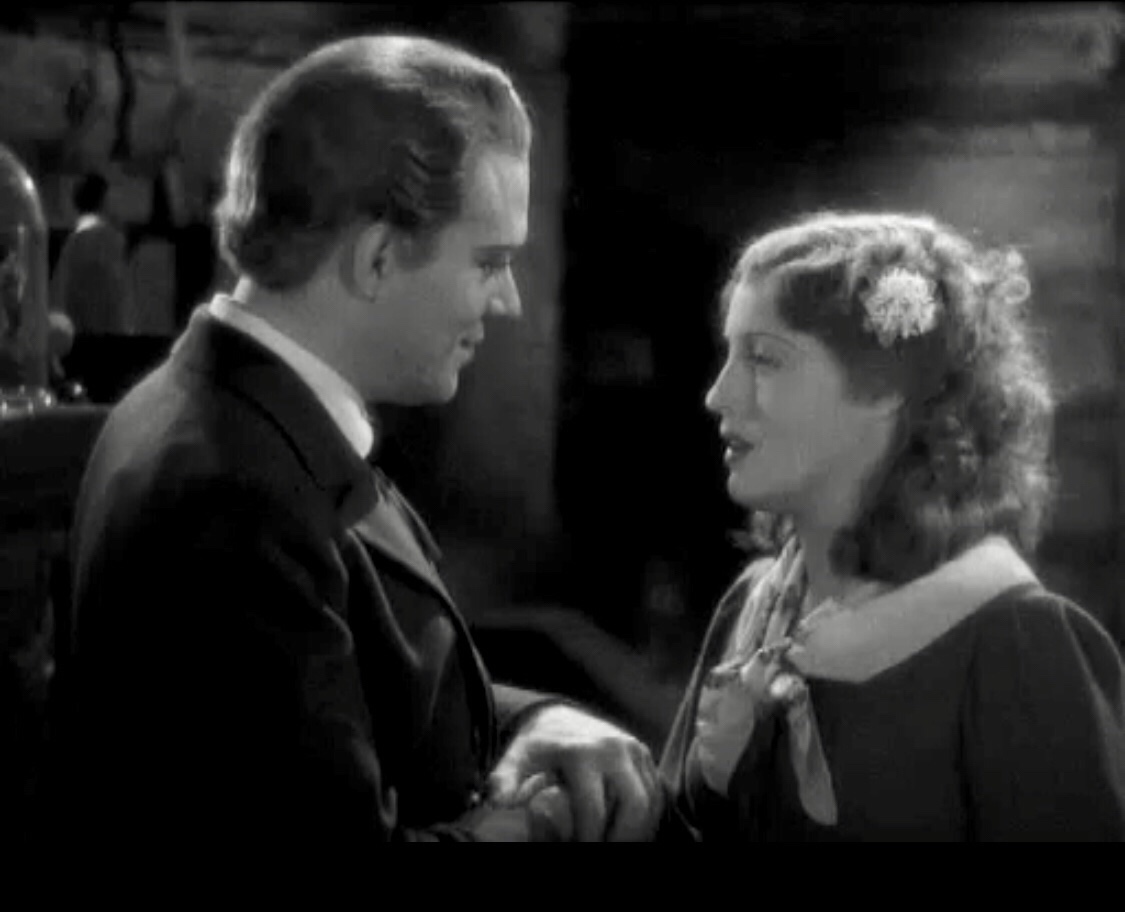
1:33…. and they kiss. By this time in real life Nelson was grilling Jeanette repeatedly as to whether she had “learned to love Gene” or whether she was happy. He mentions to his mother that he questioned Jeanette again when he went to her dressing room to study their dialogue together. It was all kept very proper and professional, all they did was run their lines. But Jeanette’s hesitation in assuring him all was well in her marriage gave him hope.
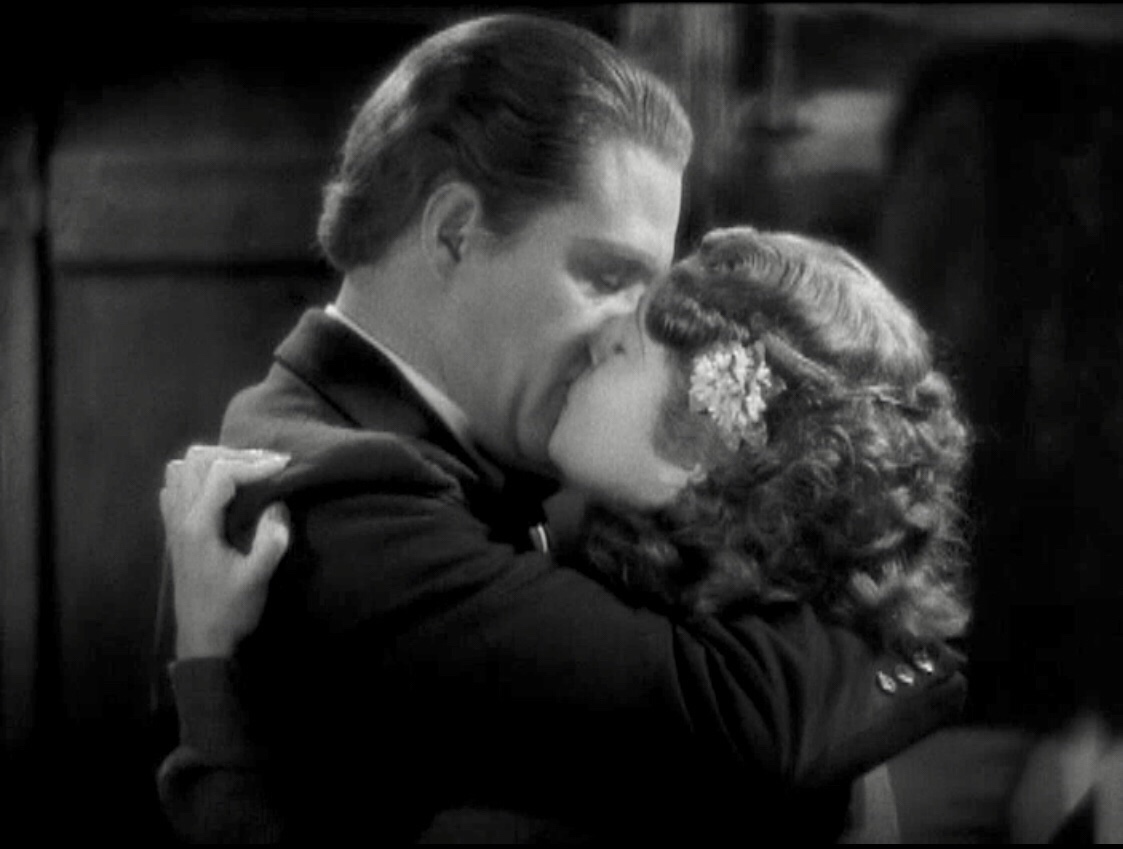
I’m not sure whether it was this kiss or perhaps one at the end of the film where the following happened, as quoted from Sweethearts:
Nelson noted in his diary: “My baby’s arms were softly tender in our love scene today. I feel very badly tonight.”
And another quote from a report to his mother:
“When I kissed her, believe me, it was no make believe. My heart was torn with despair. When it was over, she turned her head quickly away from the camera and I saw tears on her face. Somehow they maddened me. I wanted the right to gather her close and make her say she loved me.” Instead he sniped, “Weep not, my dear. It was only acting.” Jeanette looked at him for a moment then stomped off to her dressing room, refusing to open the door for over two hours.
And another quote:
“I can’t trust myself to be alone with her. It was all I could do not to jump her.”
1:41. Nelson has left the cabin, been shot, and staggers back. Jeanette hides him from the sheriff. But a few dripping drops of blood gives away his hiding place and Jeanette has to help lug him back down where he collapses on the floor. As it had happened in their previous films, her closeness visibly aroused him.
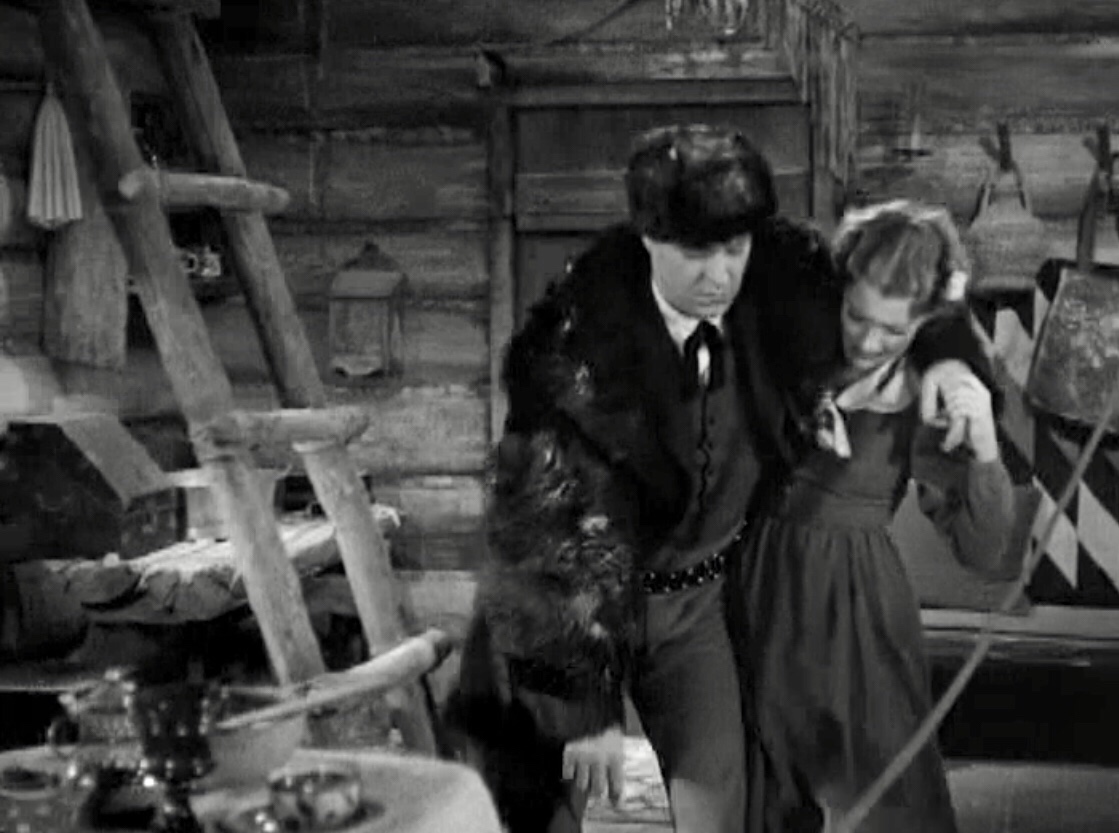
In one of the still photos, we see Jeanette tending to him… and him still standing at attention despite his character supposedly being near death.
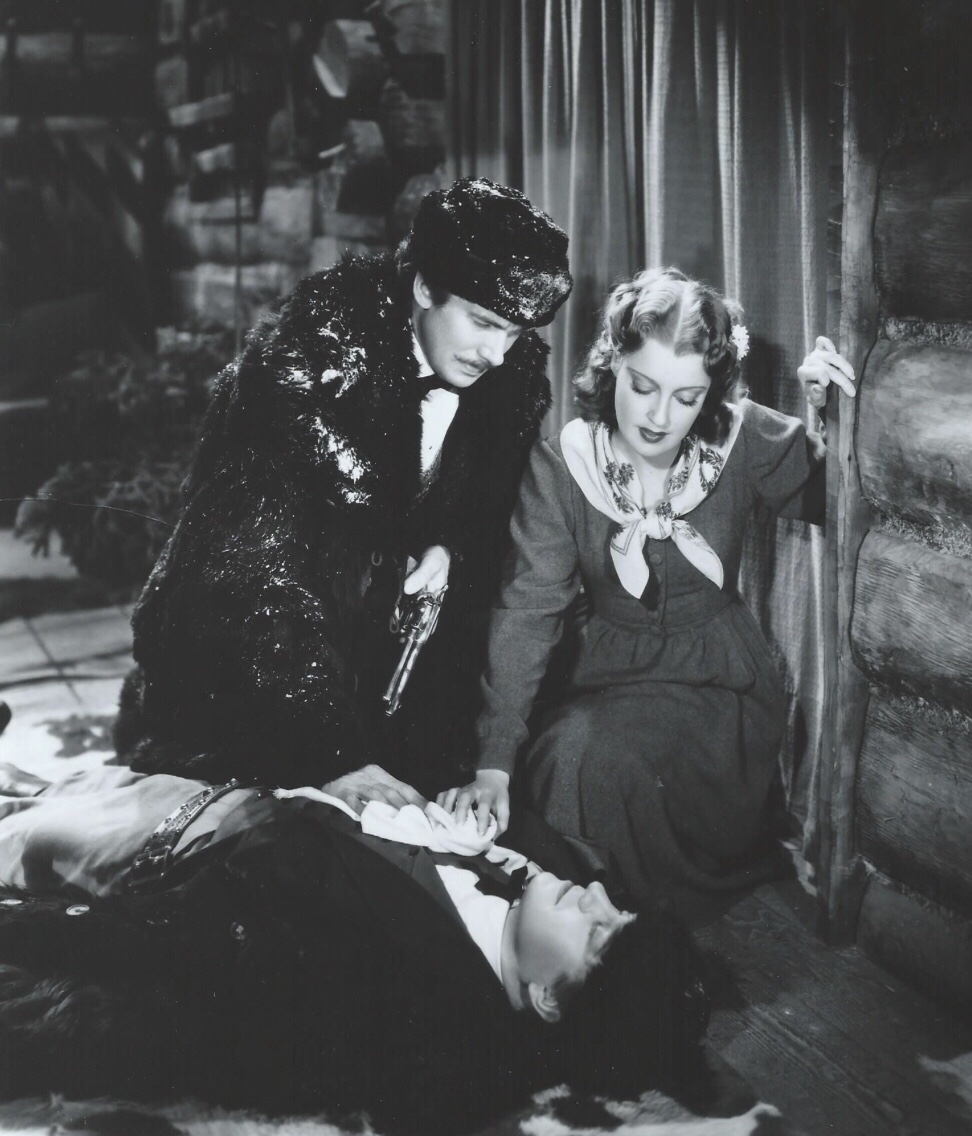
But this particular shot has been cut from the scene! Instead we see Jeanette tenderly ministering to Nelson only up to this point…
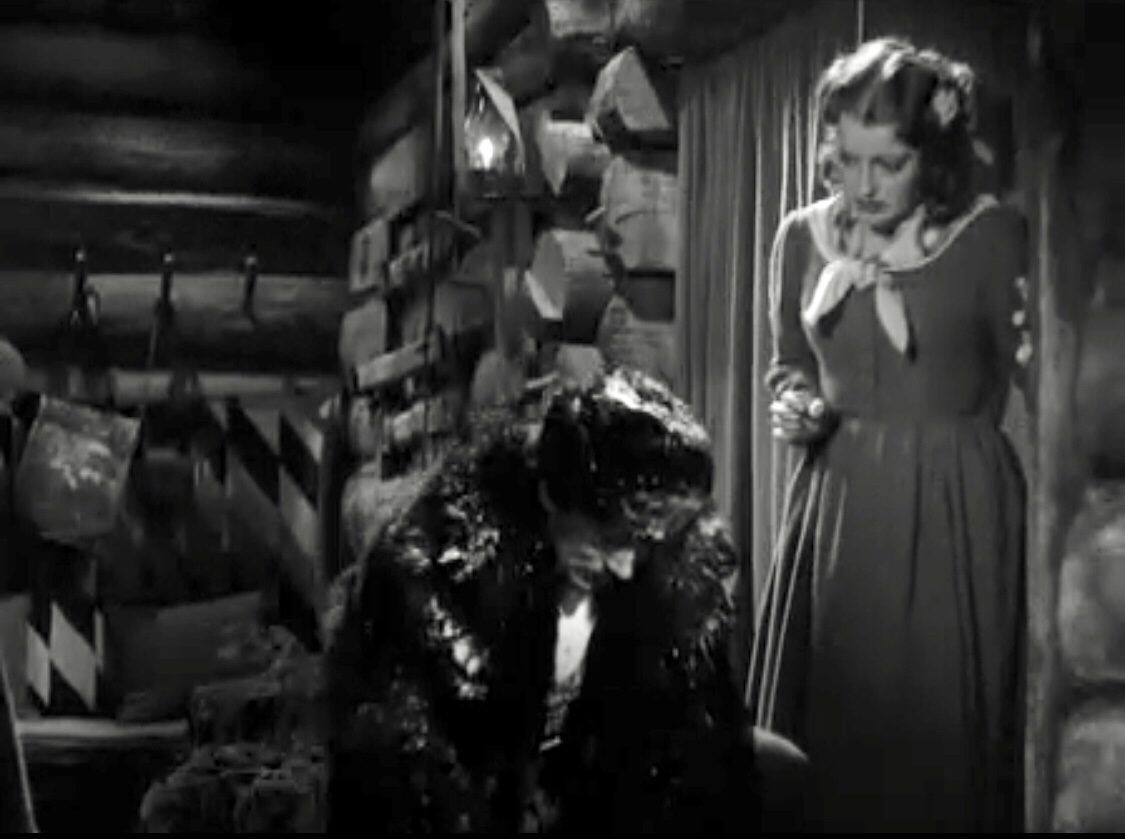
…and the rest of the shot showing Nelson’s problem is now only with Walter Pidgeon kneeling next to Nelson. Guess it was just a little too suggestive that Nelson might be aroused by Jeanette!?!
1:49. Jeanette agrees to marry the sheriff in exchange for saving Nelson’s life. They’re not in anymore scenes together until the end of the film.
1:59. Jeanette and Nelson reunite in Father Sienna’s garden and kiss. The sheriff does the noble thing and lets them have a happy ending. But once again, we don’t really see much of the kiss or that scene, only hear their talking as the camera is on Walter Pidgeon and H.B. Warner listening. What are we missing visually?
There is again a still taken that gives us a glimpse although perhaps we’ll never fully know what was shot and why the footage wasn’t used.
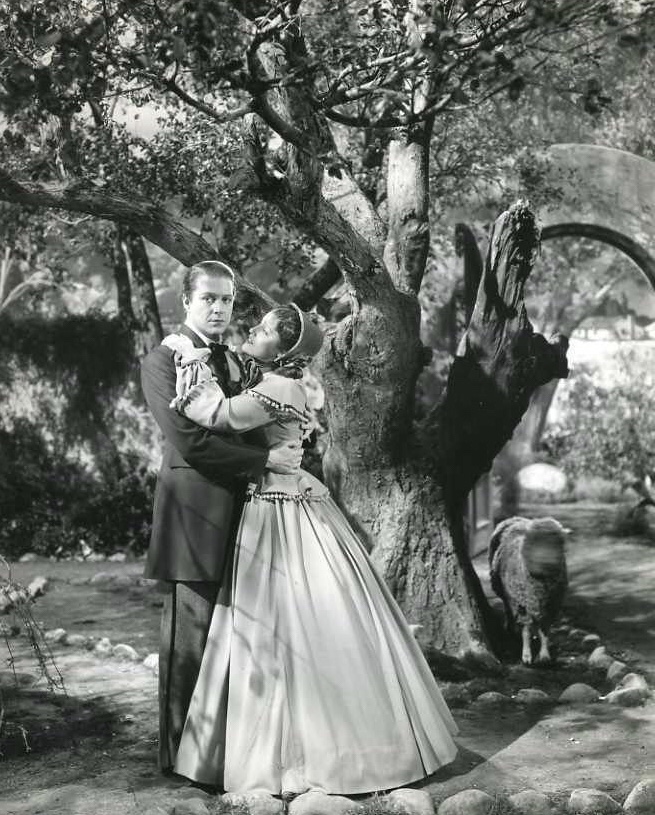
2:00. They ride happily off into the sunset, his arm firmly around her waist; she’s holding his hand, covering it with her other hand so the audience doesn’t notice the interesting tug-of-war with a finger before they kiss again as the film ends.
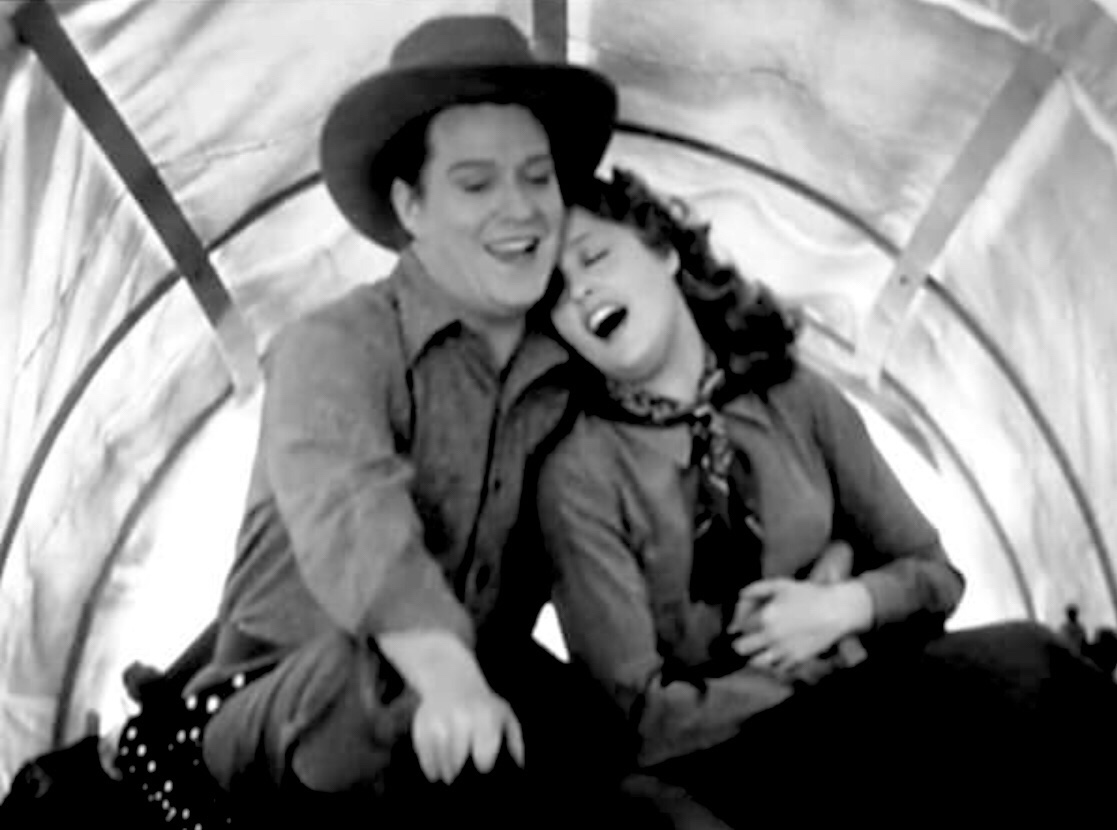
In mid January 1938, Jeanette decided her marriage to Gene Raymond was over. She filed for a California divorce and she and Nelson moved into into a tiny, non-movie star residence in Burbank, not far from Warner Bros. studio. This was kept a secret for the time being for fear of studio interference. This divorce was never finalized but that’s another story and covered in the book Sweethearts.
Here is the link to both the “Obey Your Heart” study and footage as well as the lost duet itself, which was never commercially recorded or released as a duet.
© 2018 by Sharon Rich, all rights reserved. The above quotes and book passages are from Sweethearts (© 1994, 2001, 2014 by Sharon Rich) also available at Amazon as a Kindle or softcover.
